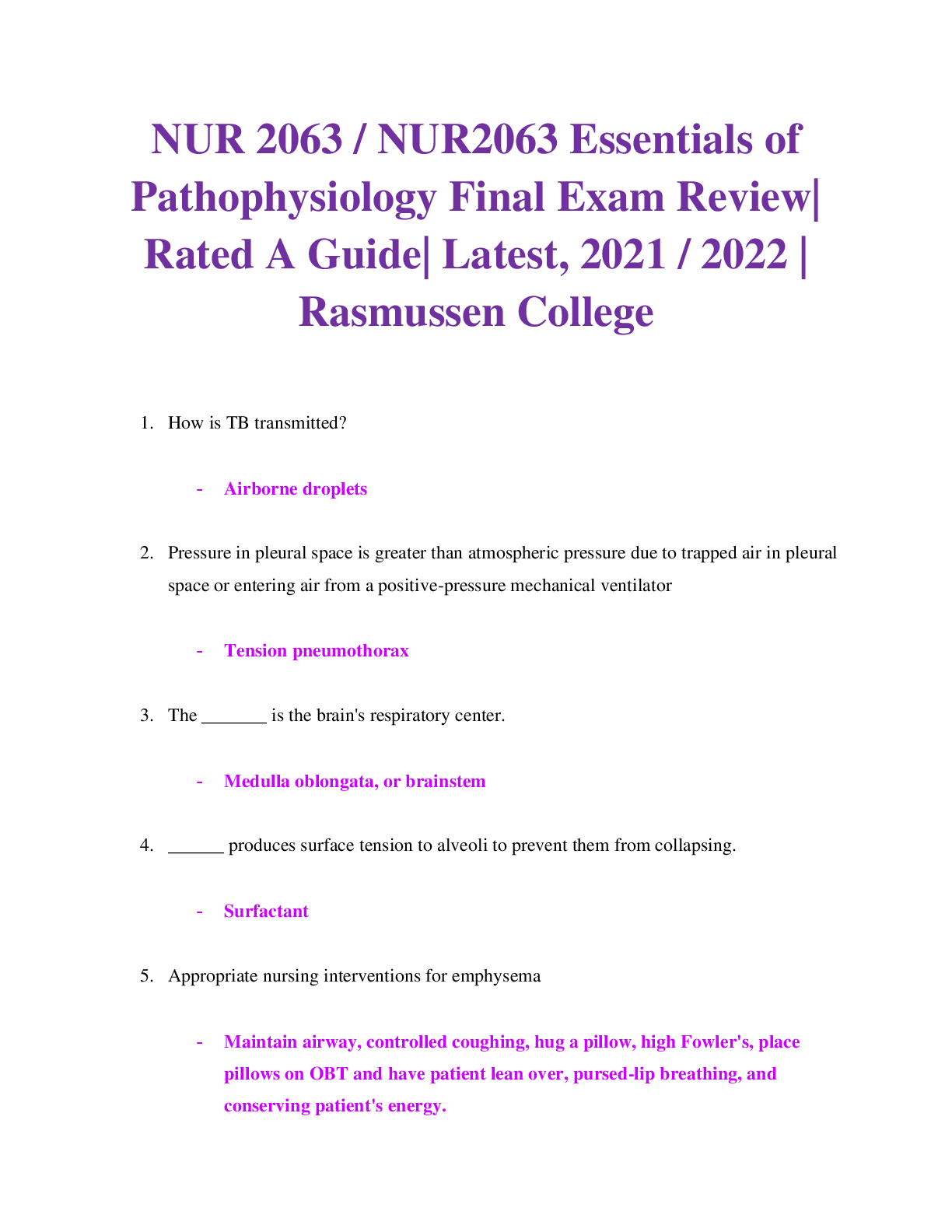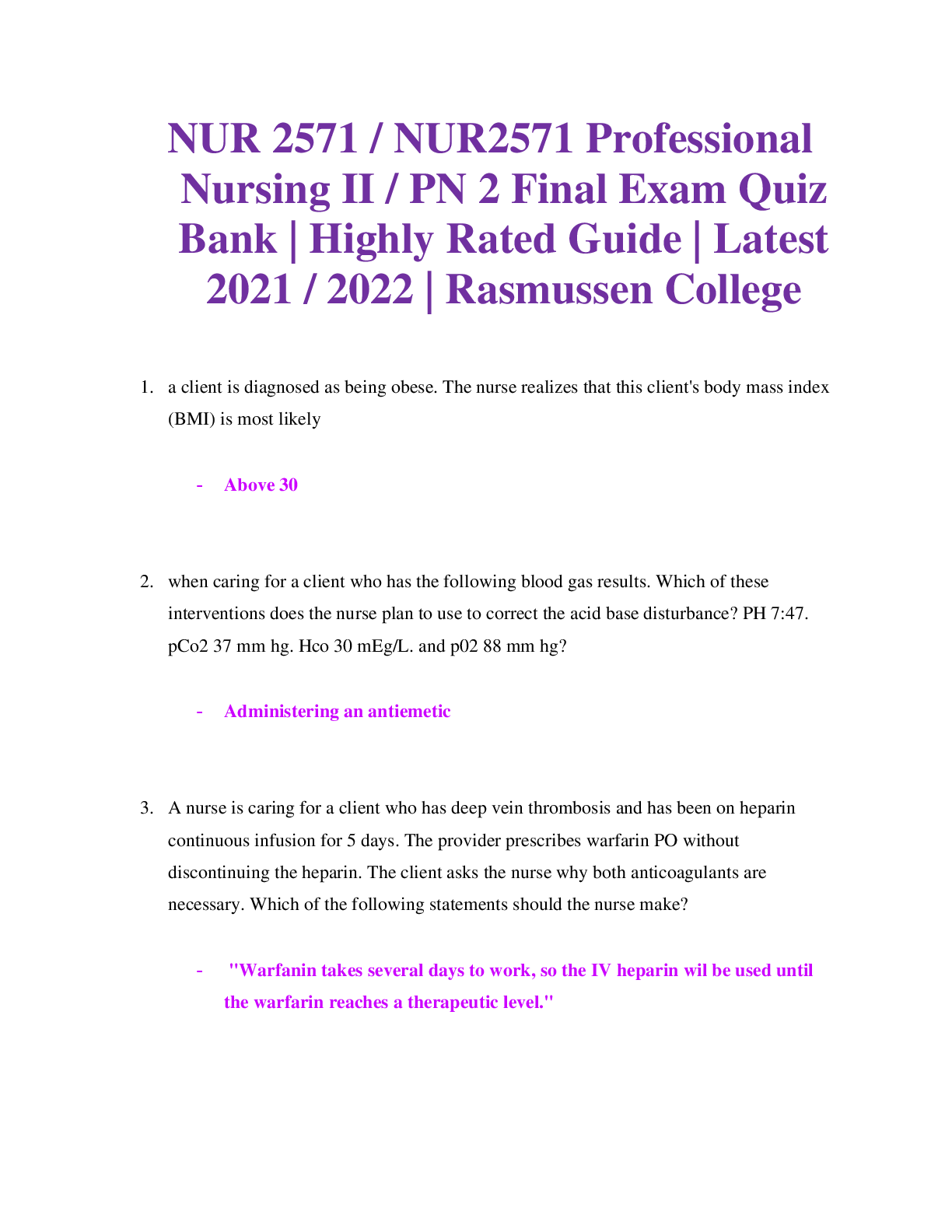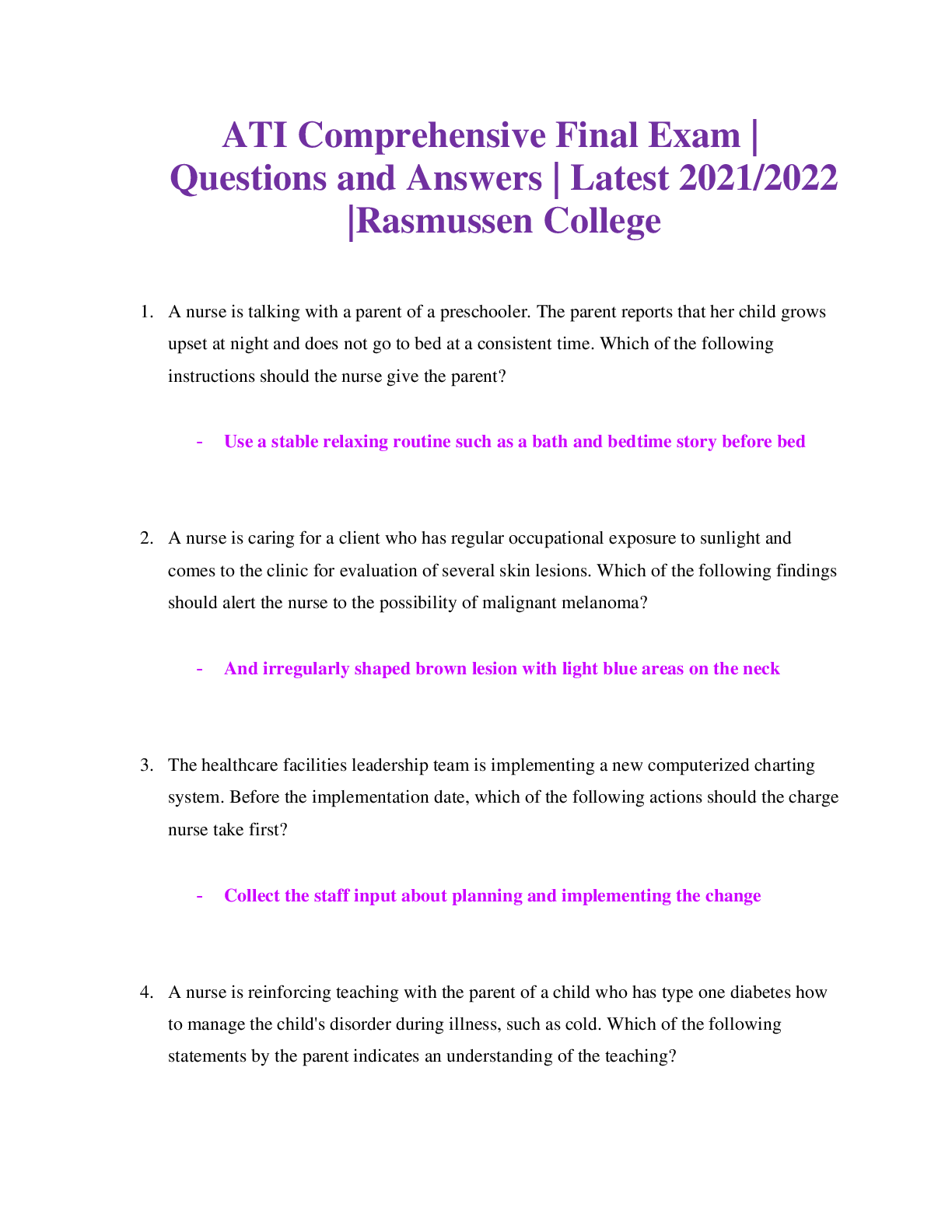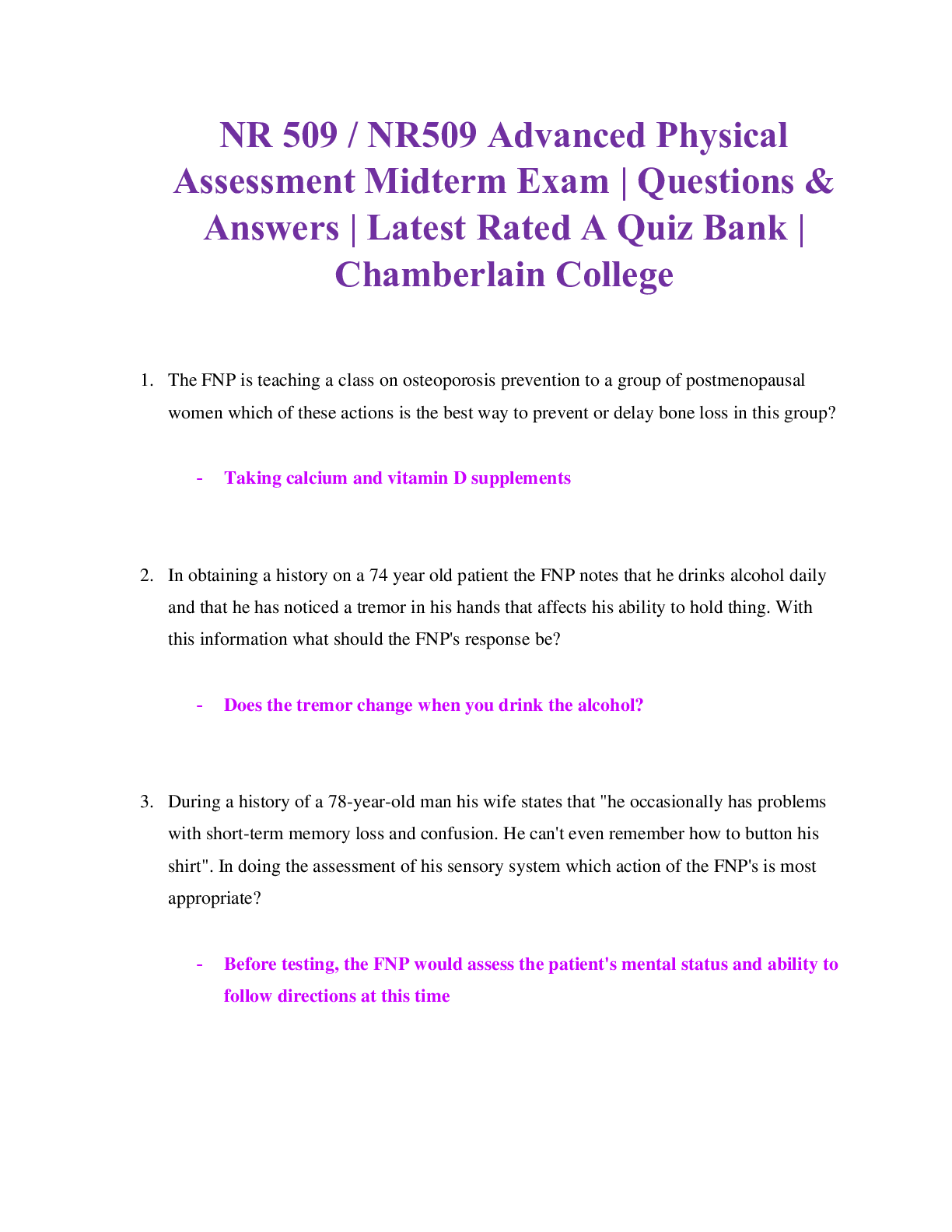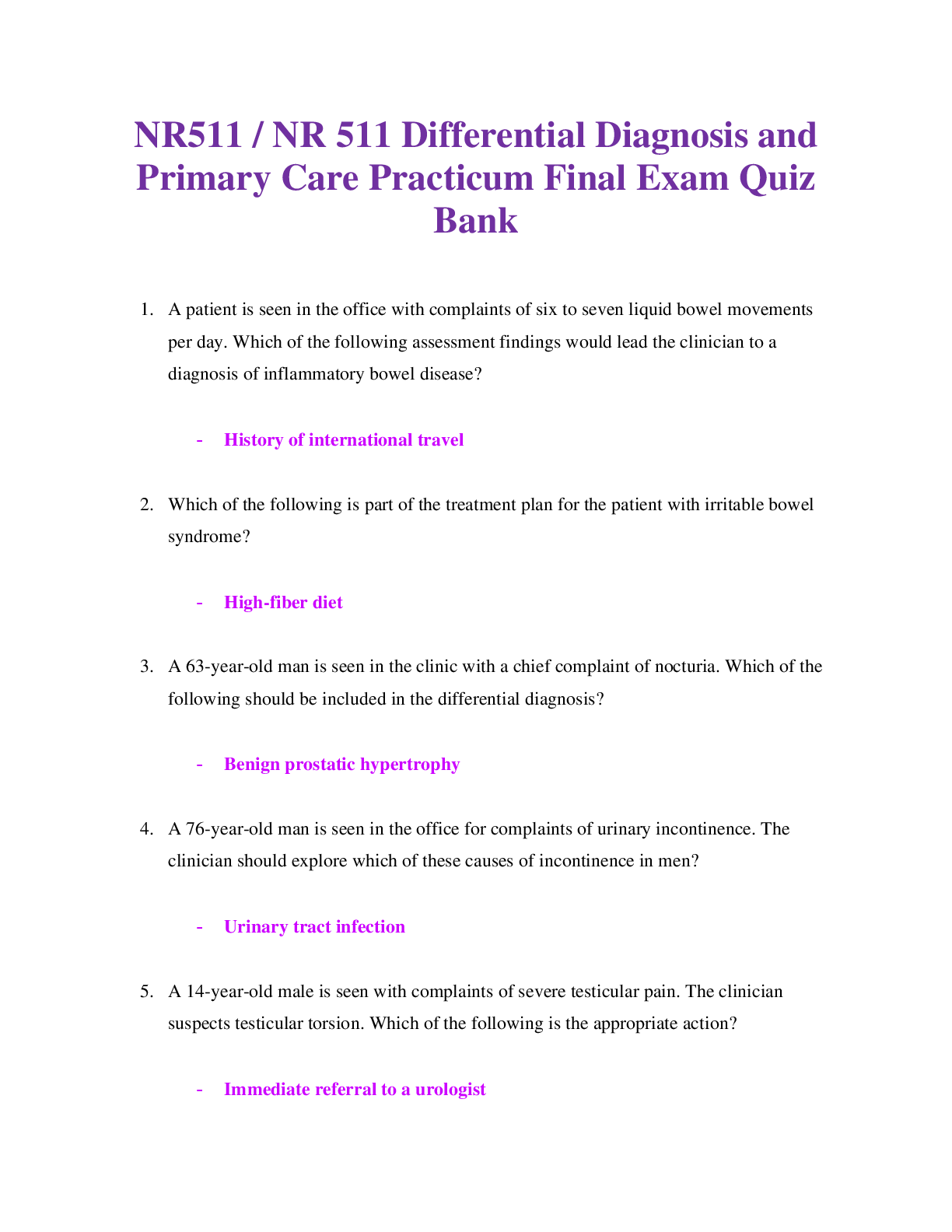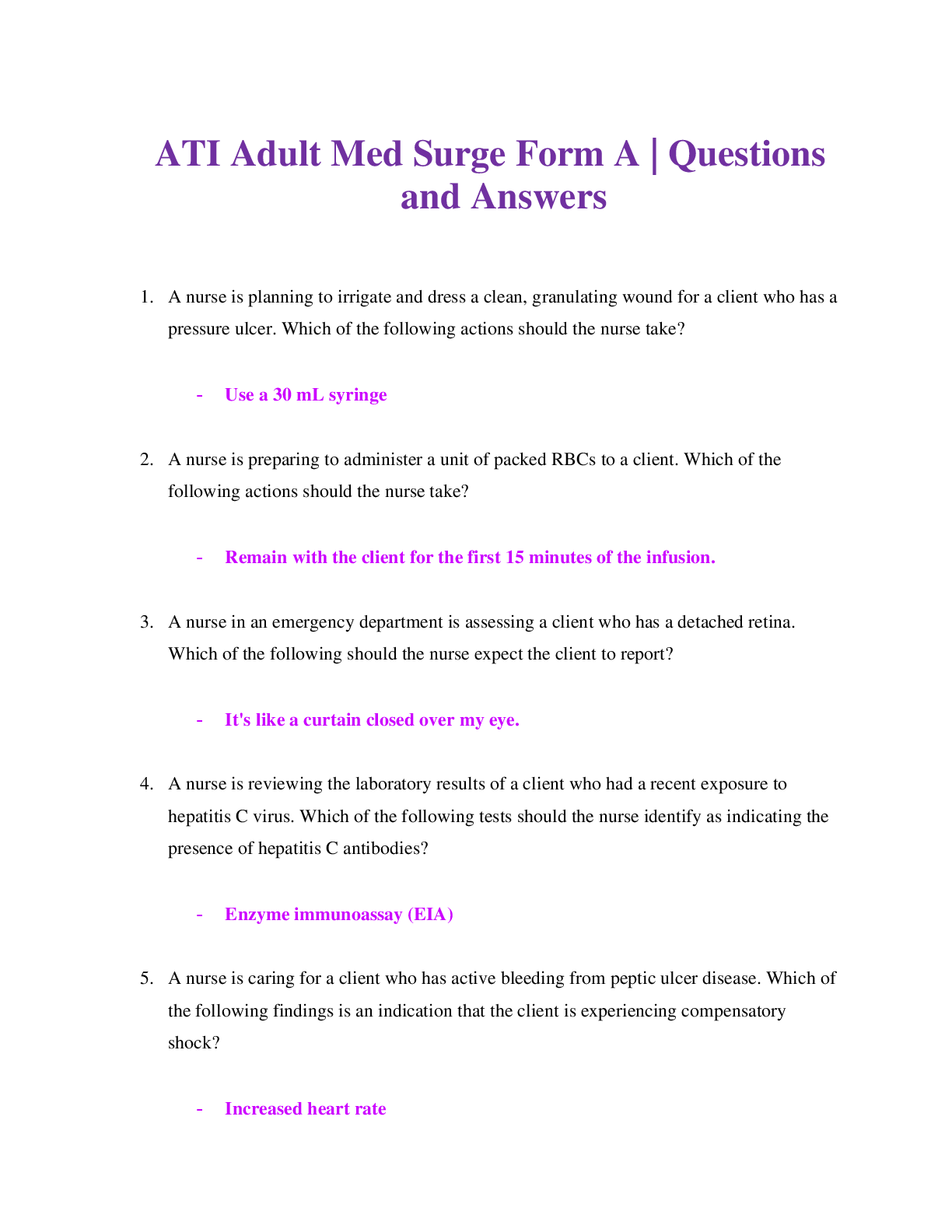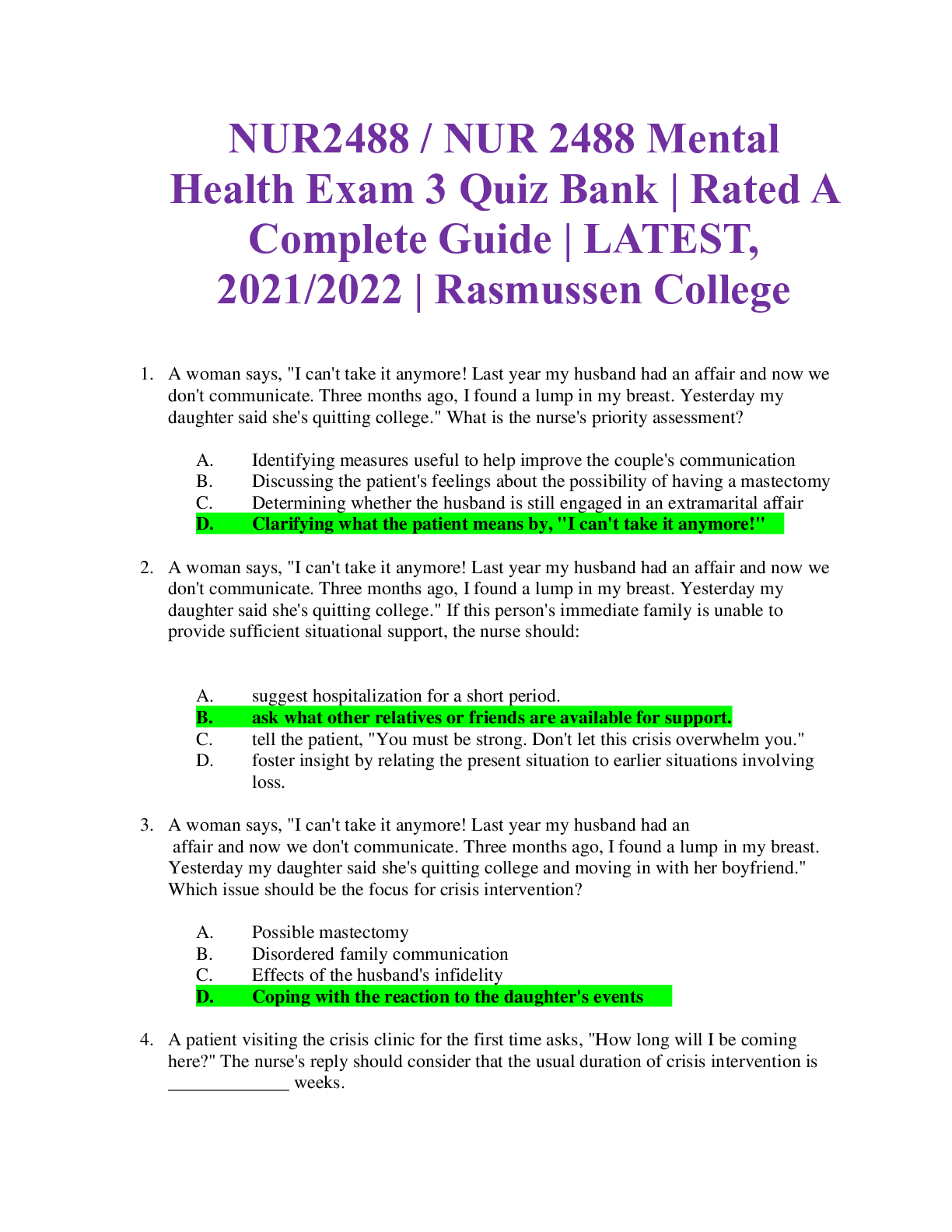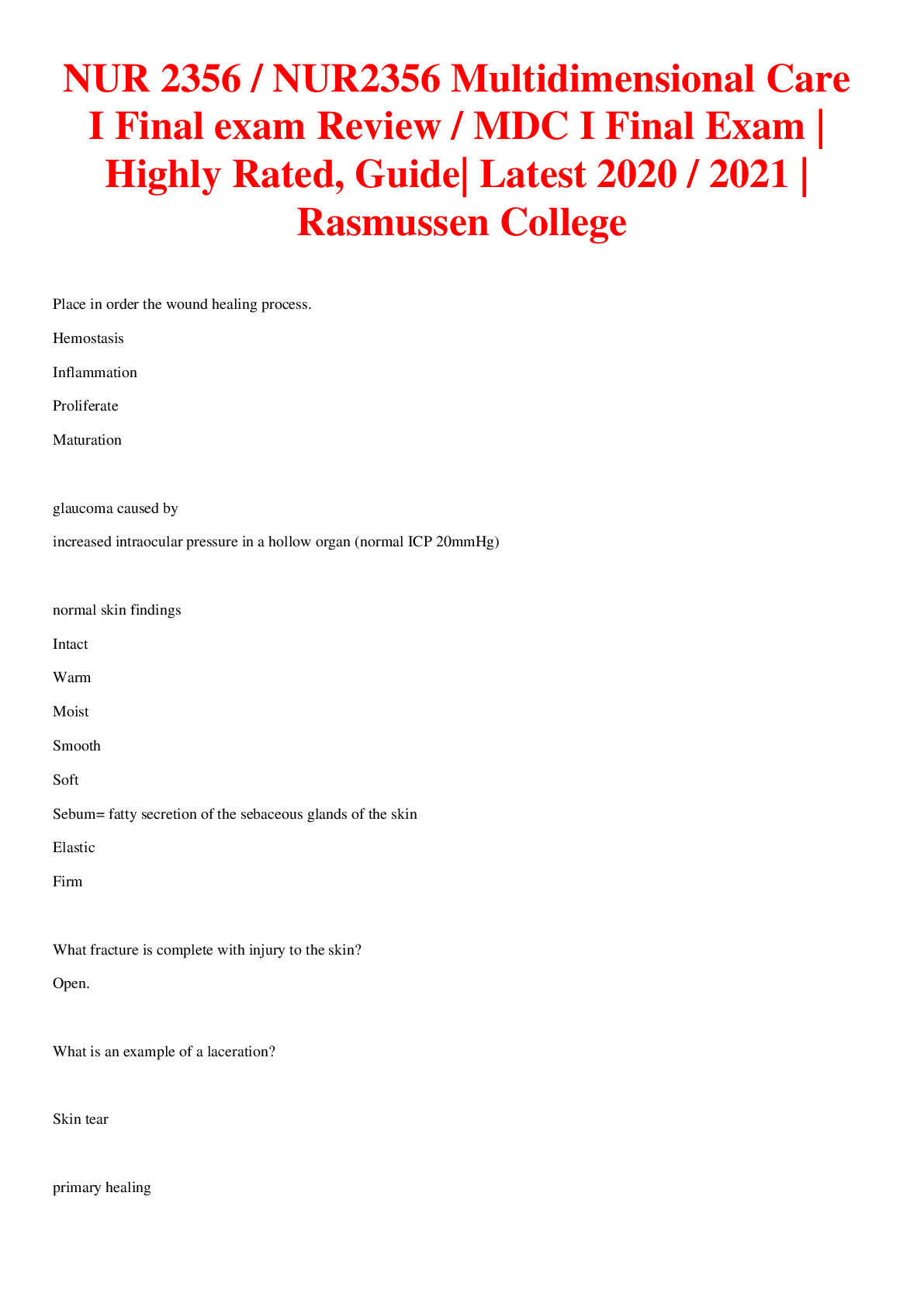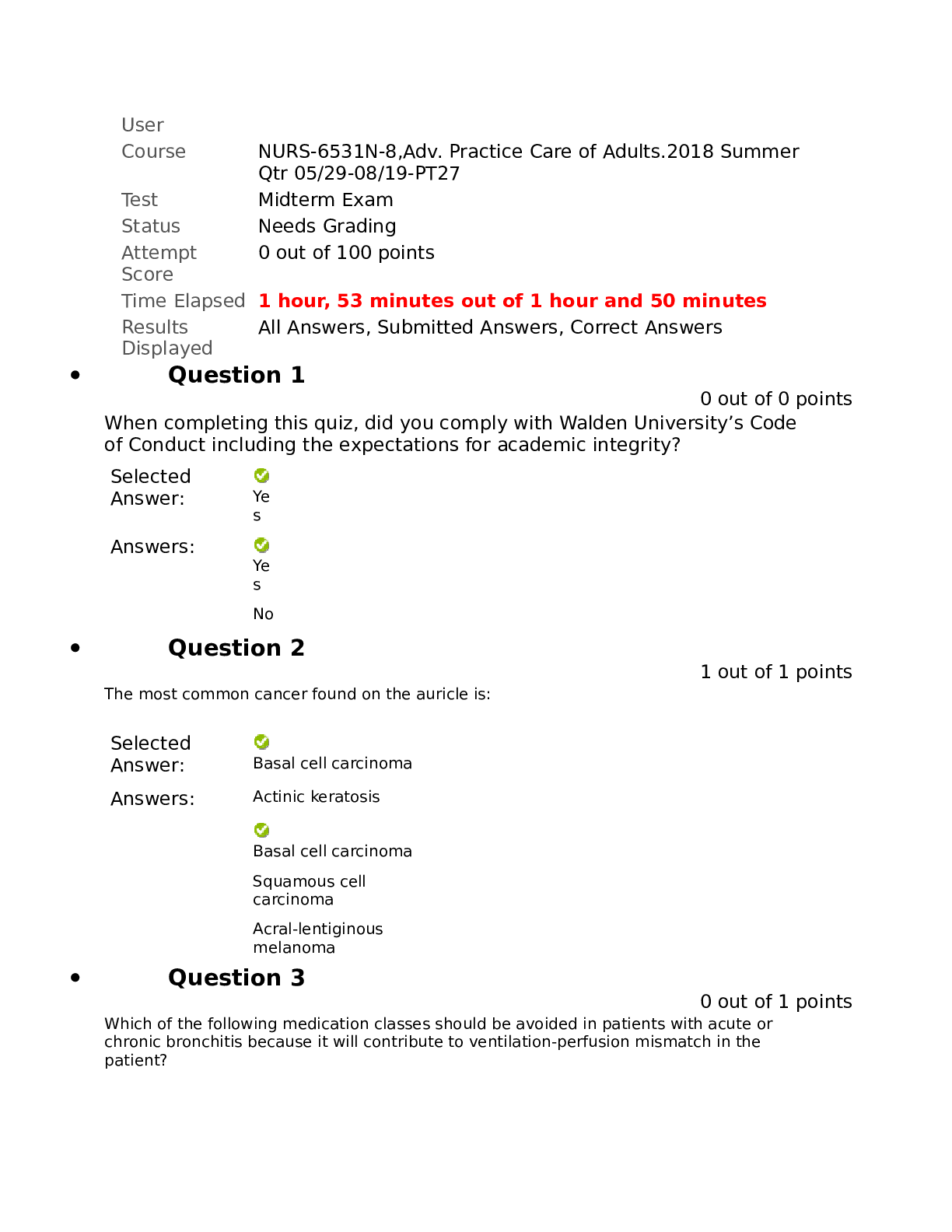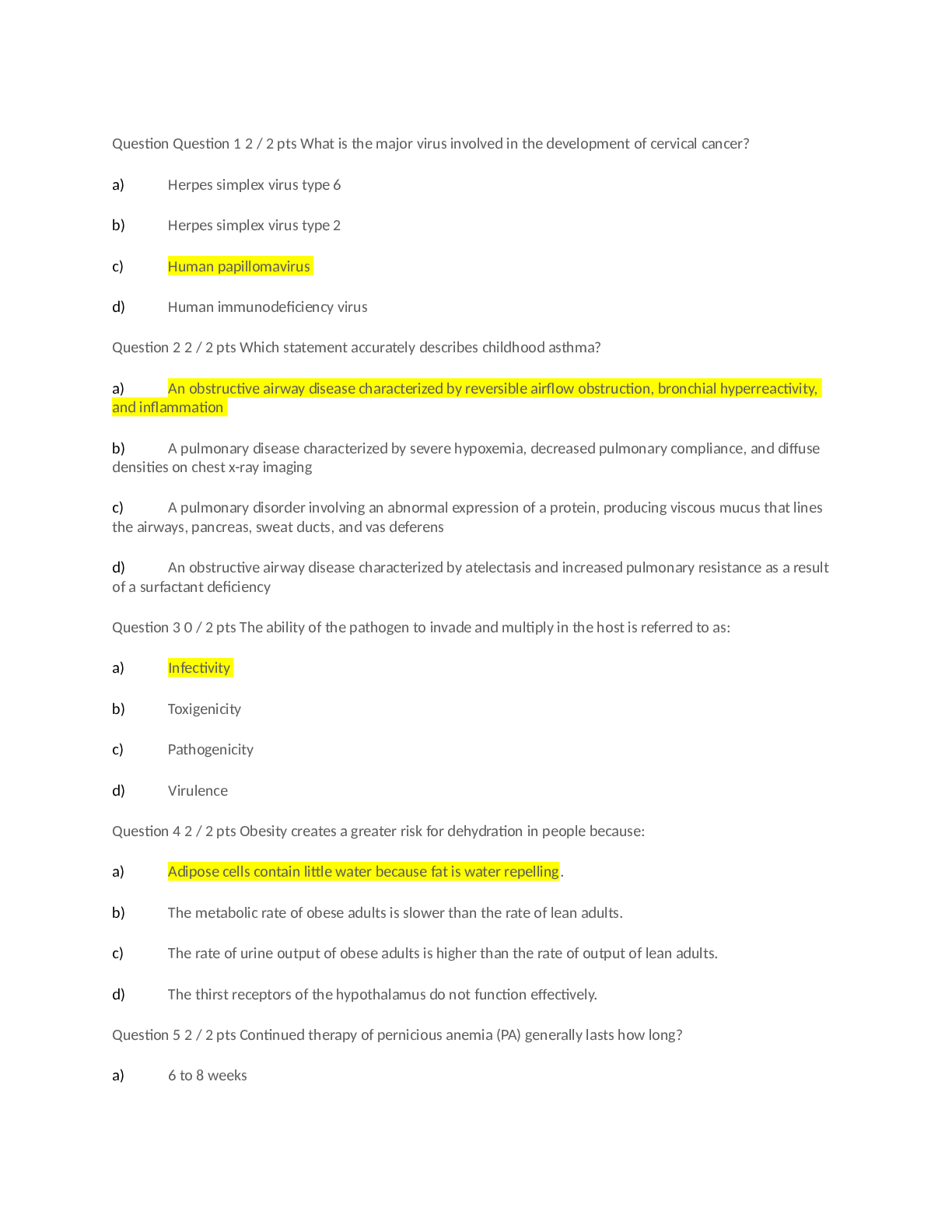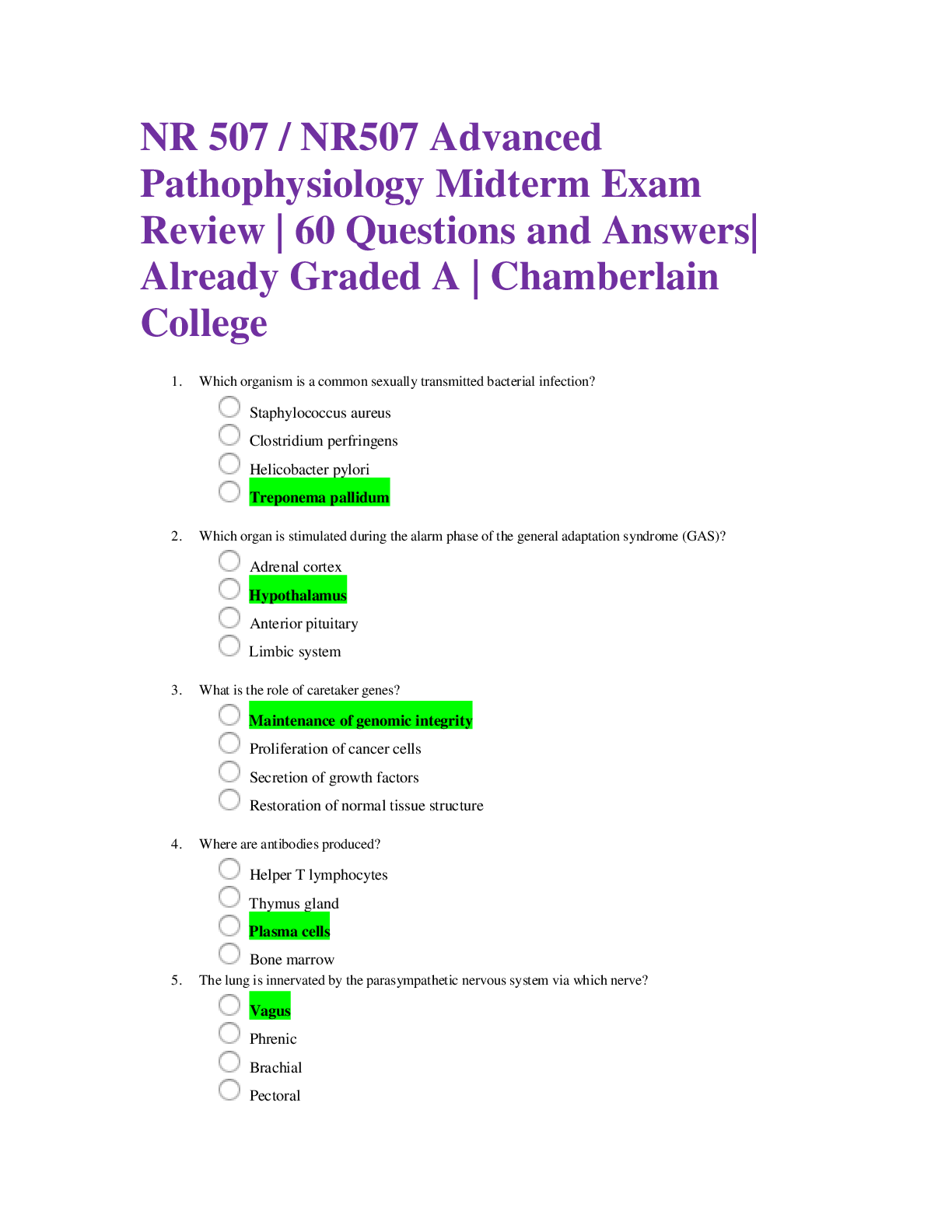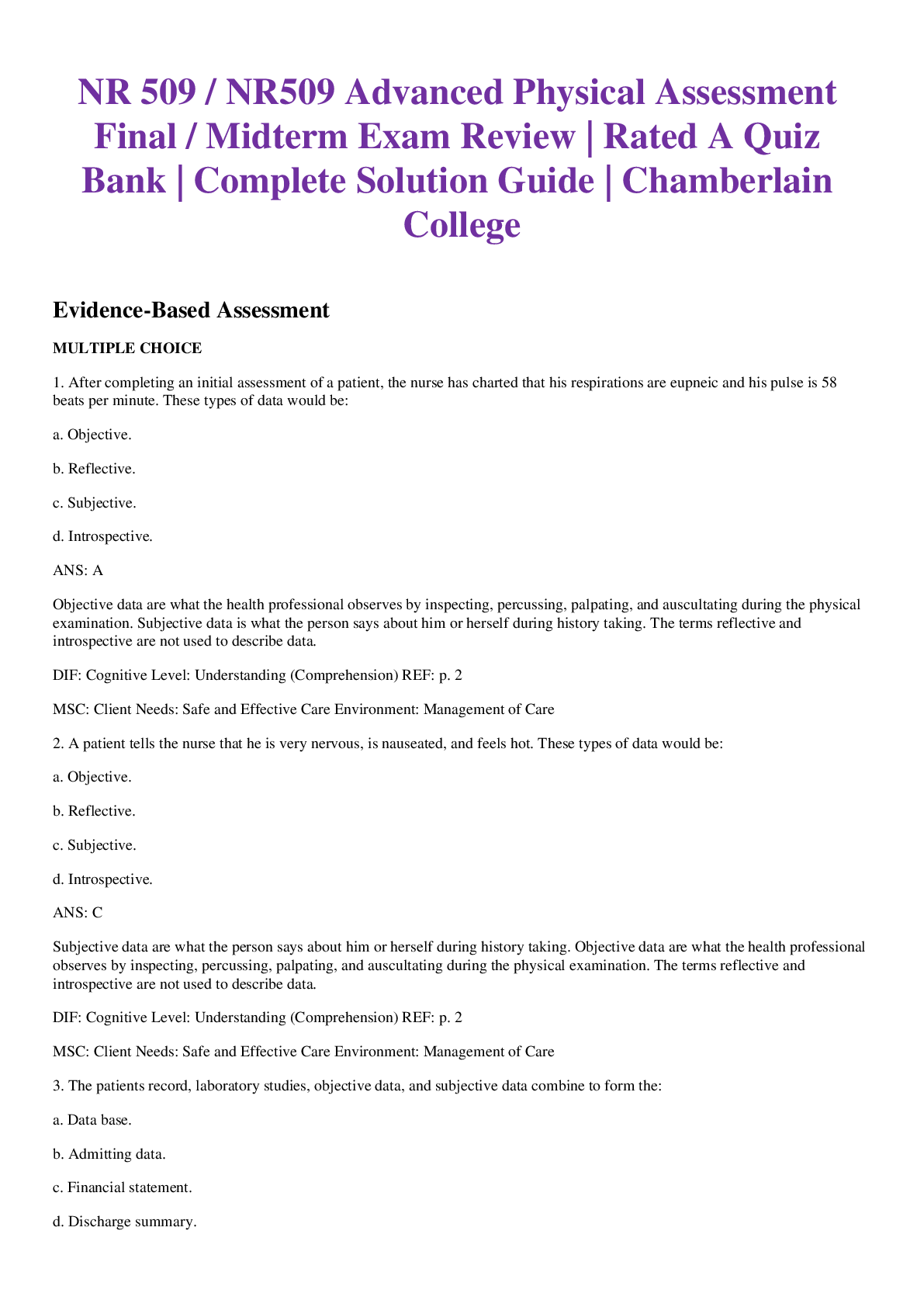*NURSING > EXAM > NR 509 / NR509 Advanced Physical Assessment Midterm Exam Review | 100 Q & A | Rated A Quiz Bank | | (All)
NR 509 / NR509 Advanced Physical Assessment Midterm Exam Review | 100 Q & A | Rated A Quiz Bank | | Chamberlain College
Document Content and Description Below
1. The FNP is performing a review of symptoms. Which of these questions are appropriate as Health promotion questions to ask during this time? - Do you sunscreen while outside? 2. The FNP is inco... rporating a person’s spiritual values into the health history. Which of these questions illustrates the community portion of the FICA questions? - Are you part of any religious or spiritual congregation? 3. The FNP is preparing to complete a health assessment on a 16-year-old girl whose parents have brought her to the clinic. Which instruction would be appropriate for the parents before the interview begins? - While I interview your daughter, will you step out to the waiting room and complete these family health history questionnaire 4. A mother brings her two month old daughter in for an examination says “my daughter rolled over against the wall and now I have noticed that she has the spot soft on the top of her head, is there something terribly wrong?” The FNP‘s best response would be: “That soft spot is normal and actually allows for growth of the brain during the first year of your baby’s life” 5. During percussion the FNP knows that a dull percussion note elicited over a lung lobe. This most likely results from: Increased density of lung tissue 6. The patient is unable to differentiate between sharp and dull stimulation to both sides of her face. The FNP suspects Damage to: The trigeminal nerve 7. When examining the face, the FNP is aware that the two pairs of salivary gland‘s that are accessible to examination are the _____ glands Parotid and submandibular 8. A patient comes to the clinic complaining of neck and shoulder pain and is unable to turn her head. The FNP suspects damage to cranial nerve ____ and proceeds with the examination by____ XI; asking the patient you should have her shoulders against resistance 9. When examining a patient’s cranial nerve function, the FNP remembers that the muscles in the neck that are innervated by CN XI are the: Sternomastoid and trapezius 10. The patient’s laboratory data reveal an elevated thyroxine level. The FNP would proceed with an examination of the _____ gland Thyroid 11. A patient says that she has recently noticed a lump in the front of her neck below her “Adams apple” that seems to be getting bigger. During the assessment, the finding that leaves the FNP to suspect that this may not be a cancerous thyroid nodule is that the lump: Is mobile and not hard 12. The FNP notices that the patient’s submental lymph nodes are enlarged. In an effort to identify the cause of the node enlargement, the FNP would assess the patient’s: Area proximal to the enlarged node 13. The FNP is aware that the four areas in the body were lymph nodes accessible are the: Head and neck, arms, inguinal area, and axillae 14. A 52-year-old patient describes the presence of occasional floaters or spots moving in front of his eyes. The FNP should know that floaters are usually not significant and are caused by: Condensed vitreous fibers 15. The FNP is preparing to assess the visual acuity of a 16-year-old patient. How should the FNP proceed? Use the Snellen chart position 20 feet away from the patient 16. A patient’s vision is recorded as 20/30 when the Snellen eye chart is used. The FNP interprets these results to indicate that: The patient can read at 20 feet would a person with normal vision can read it 30 feet 17. A patient is unable to read even the largest letters on the Snellen chart. The FNP should take which action next: Shorten the distance between the patient and the chart until it is seen and record that distance 18. A patient’s vision is reported as 20/80 in each eye. The FNP interprets this finding to mean that The patient has poor vision 19. When performing the corneal light reflex assessment, the FNP notes that the light is reflected at 2 o’clock in each eye. The FNP should Consider this a normal finding 20. A patient tells the FNP that he is very nervous, that he is nauseated, and that he “feels hot”. This type of data would be: - Subjective 21. The patient’s record, laboratory studies, objective data, and subjective data combine to form the: - Data base [Show More]
Last updated: 2 years ago
Preview 1 out of 10 pages

Buy this document to get the full access instantly
Instant Download Access after purchase
Buy NowInstant download
We Accept:

Reviews( 0 )
$13.50
Can't find what you want? Try our AI powered Search
Document information
Connected school, study & course
About the document
Uploaded On
Nov 20, 2020
Number of pages
10
Written in
Additional information
This document has been written for:
Uploaded
Nov 20, 2020
Downloads
2
Views
162

